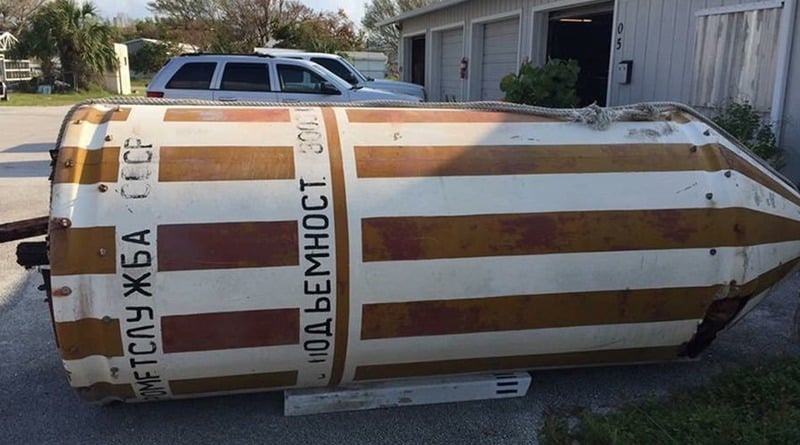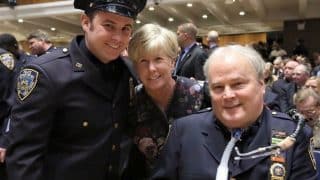
Hurricane Irma long since left Florida, but some unusual finds after it became known only now.
So, on a beach, Dania Beach in South Florida threw a huge striped buoy with the inscription in Russian: «the hydrometeorological service of the USSR».

How the buoy appeared in Florida, as well as its precise function is unclear. «Yeah, we have rarely POPs up,» said Orlando Sentinel employee of the Park Dr. Von D. Mizell-Eula Johnson Bill Moore.
Some believe that the buoy weighing 1200 pounds traveled 350 miles from Cuba, given the close historical ties of the «Island of Freedom» with the Soviet Union.
The top of the buoy is slightly damaged and looks like there was something attached to, for example, a lamp for vehicles.
«During Irma’s storm moved from the South-East. He really could bring something from Cuba,» said Robert Molleda, specialist of the National weather service.
According to him, such buoys are often used to measure the height of waves and weather changes: water temperature, humidity, wind speed, atmospheric pressure and so on.
But Harold Leitch, an expert on Russia in the Library of Congress since 1987, believes that the buoy was intended for another. Recall, the Soviet Union was the main ally of Cuba and personally by Fidel Castro in the 1960-ies. During the Cold war, the Union was actively used Cuba as a base to monitor US.
«I think this buoy and others like him were set for the navigation of Soviet ships in the waters of Cuba. In the chaos of the collapse of the Soviet Union such infrastructure just stayed in Cuba,» said Leitch.
Interestingly, the Florida beach was already visited by people who identified themselves as members of the investigative team of the naval forces of the United States. This was told by the Park Manager Steven Dale. They wanted to explore the buoys to pinpoint its purpose.